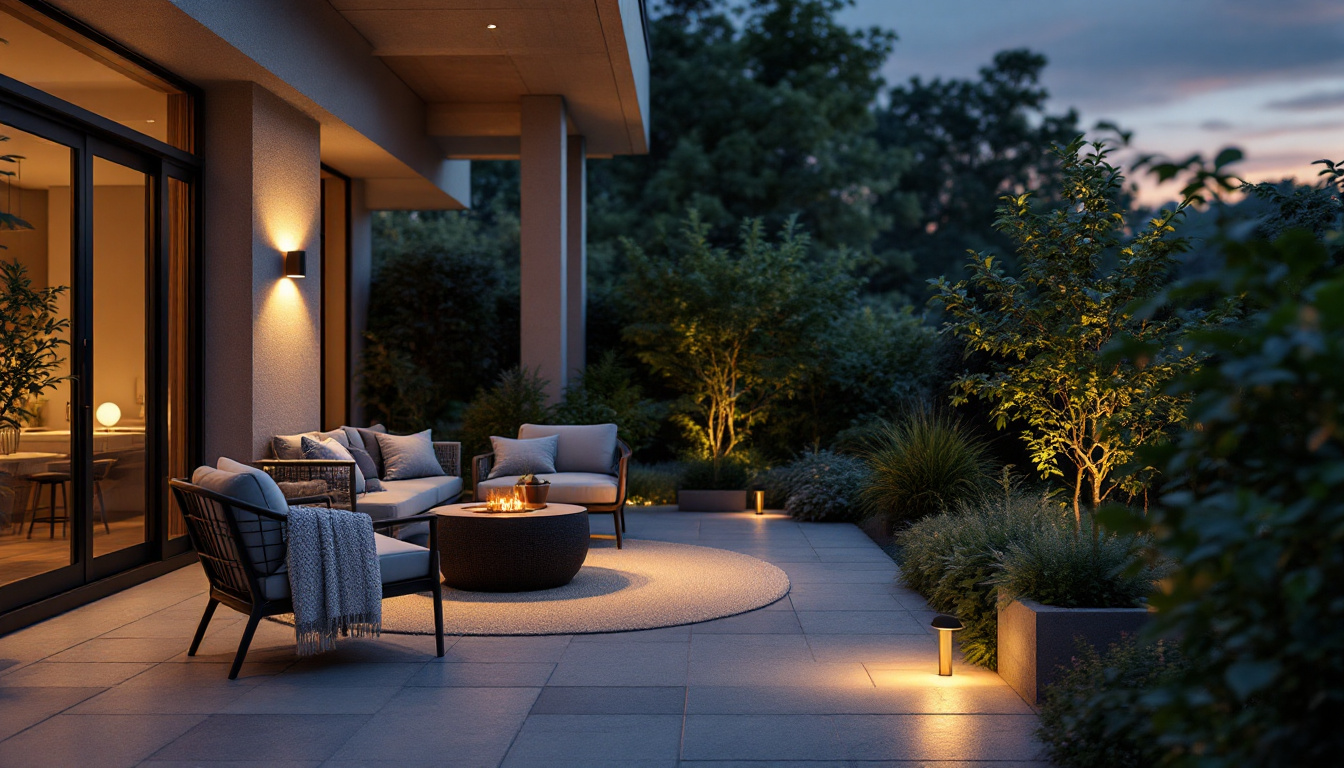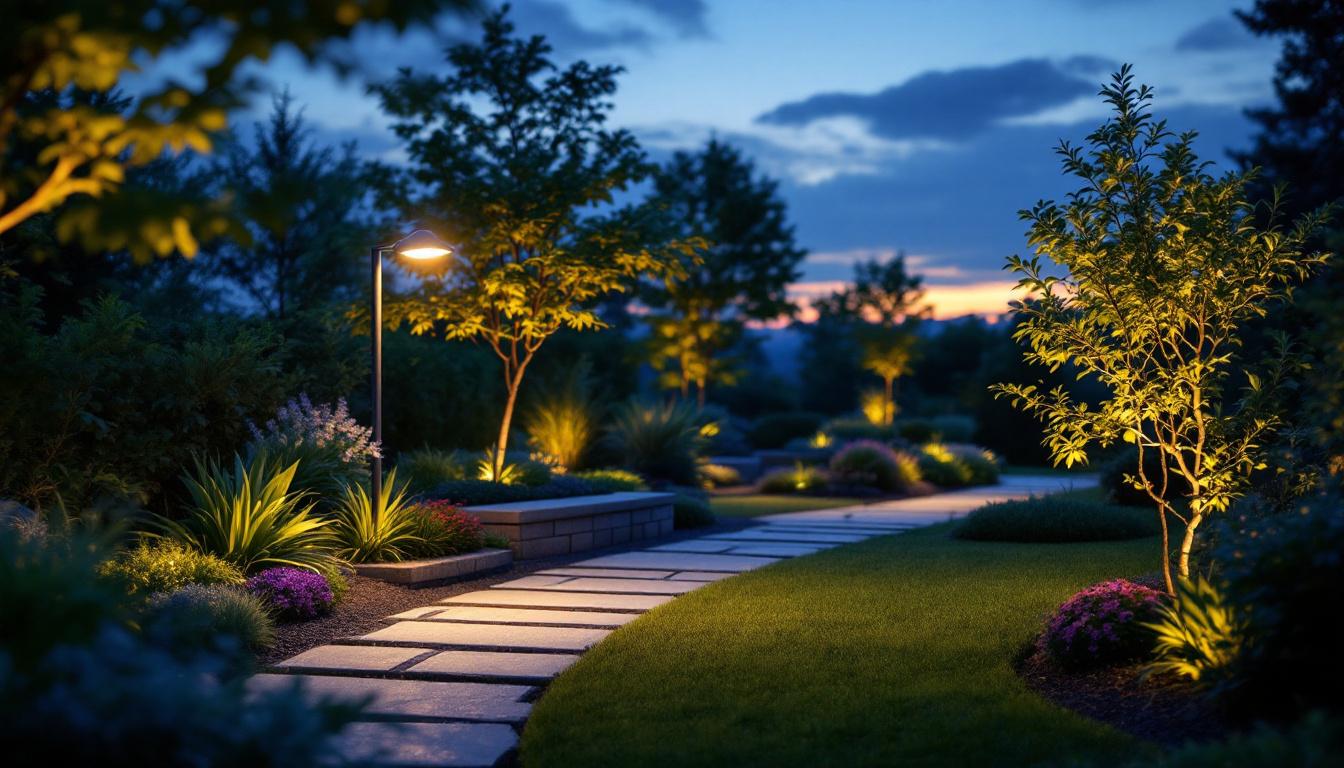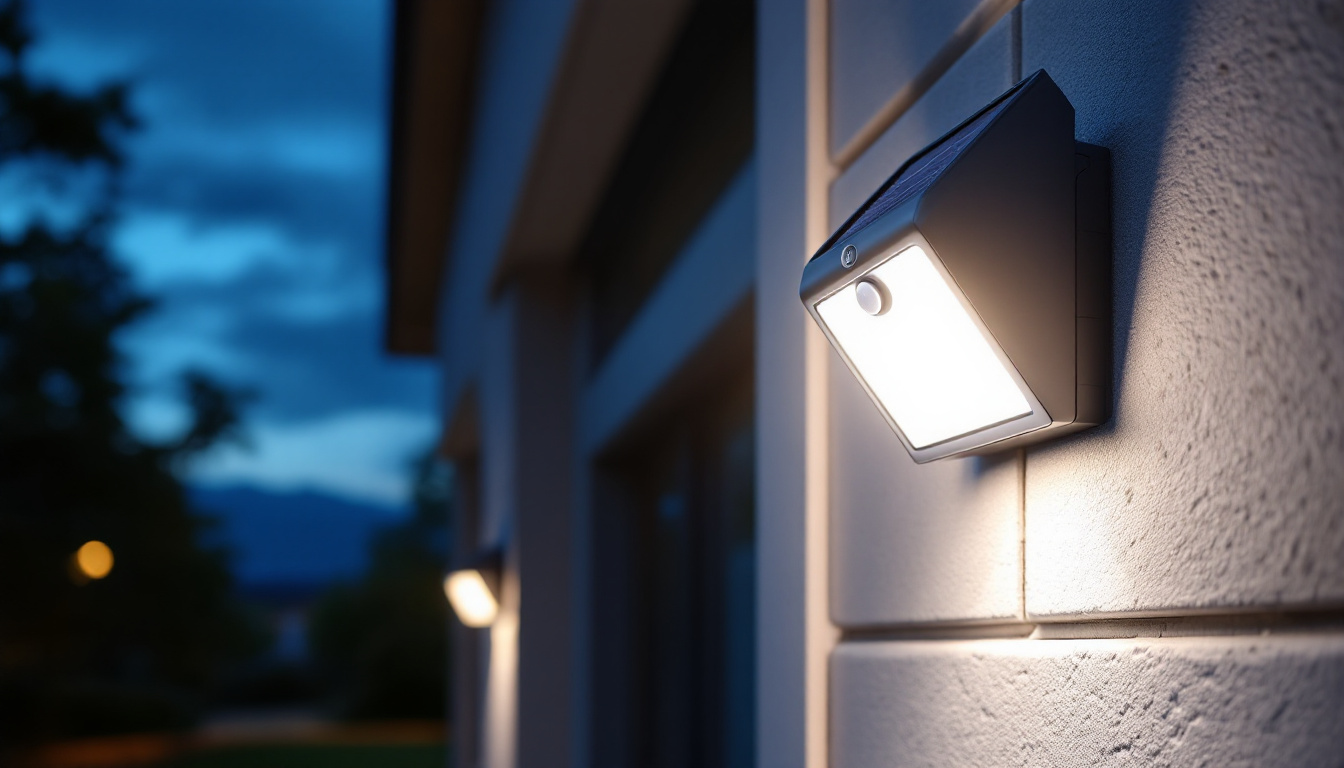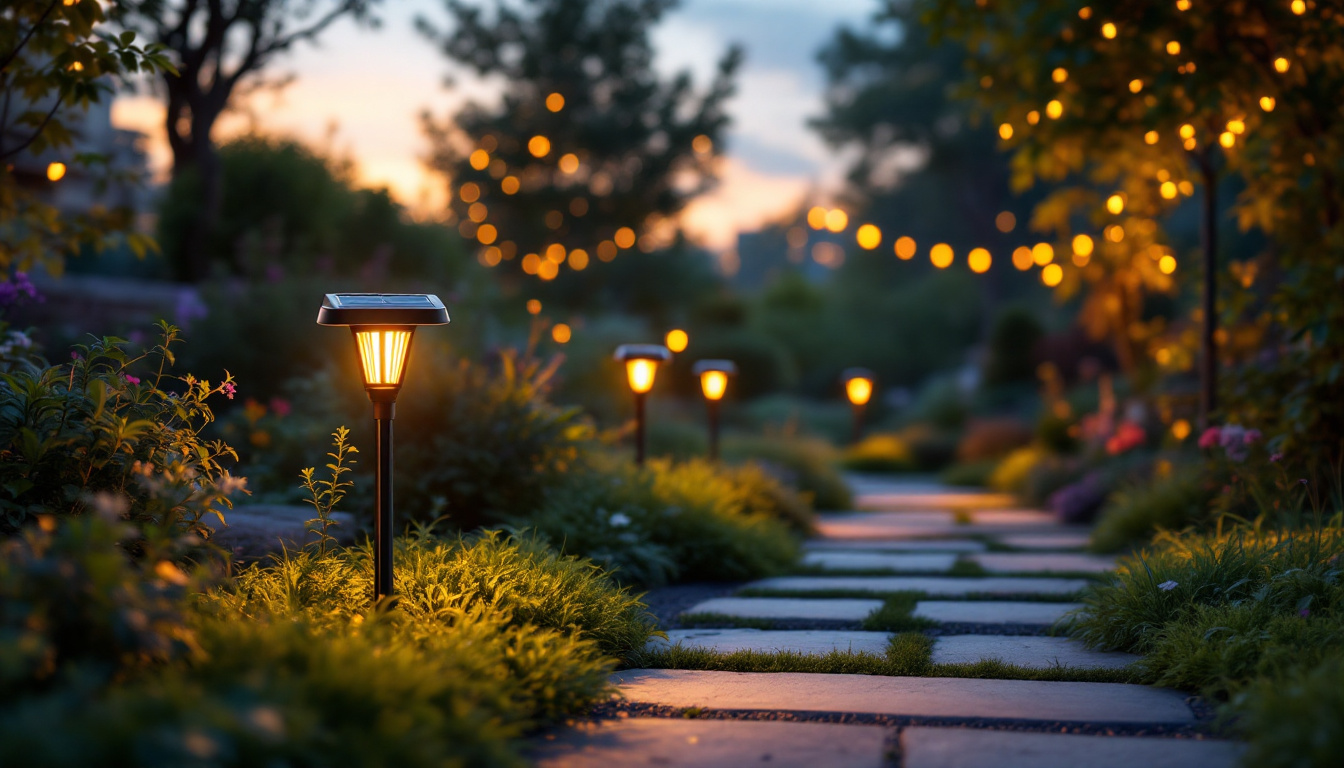
As the demand for sustainable and energy-efficient solutions continues to rise, solar outdoor lighting has emerged as a popular choice for patios and outdoor spaces. For lighting contractors, mastering the nuances of solar lighting can not only enhance project offerings but also provide clients with innovative solutions that align with modern environmental values. This article delves into essential tips and considerations for lighting contractors looking to excel in solar outdoor lighting installations.
Before diving into installation techniques and design considerations, it is crucial for lighting contractors to grasp the fundamentals of solar technology. Understanding how solar lights operate can significantly influence the quality and effectiveness of installations. With the increasing demand for sustainable energy solutions, having a solid foundation in solar technology not only enhances a contractor’s skill set but also positions them as a knowledgeable resource for clients seeking eco-friendly lighting options.
Solar lights operate by harnessing sunlight through photovoltaic cells, which convert solar energy into electricity. This electricity is then stored in rechargeable batteries, allowing the lights to function during the night. The efficiency of solar lights largely depends on the quality of the solar panel, battery capacity, and the overall design of the fixture. The integration of smart technology in modern solar lights has further revolutionized their functionality, enabling features such as motion sensors and remote control, which enhance both security and convenience.
Contractors should familiarize themselves with the various types of solar lights available, including path lights, flood lights, and string lights. Each type serves a different purpose and can be strategically used to enhance the aesthetic and functional aspects of outdoor spaces. For example, path lights not only illuminate walkways for safety but can also create a welcoming ambiance, while flood lights are ideal for illuminating larger areas, providing security and visibility in darker environments.
Several factors can affect the performance of solar outdoor lights, including geographical location, weather conditions, and seasonal variations. Lighting contractors must assess the specific environment of each project to determine the most suitable solar lighting options. Additionally, the angle and orientation of solar panels play a critical role in maximizing sunlight exposure, which can significantly enhance energy absorption and overall performance.
For instance, areas with prolonged periods of sunlight will benefit from solar lights with smaller batteries, while regions with less sunlight may require larger batteries or more efficient solar panels. Understanding these nuances can help contractors provide tailored solutions that meet client needs effectively. Moreover, considering local regulations and potential incentives for solar installations can also influence project decisions, as many regions offer tax credits or rebates for adopting renewable energy technologies, making solar lighting an even more attractive option for clients looking to invest in sustainable solutions.
Designing an effective solar lighting scheme involves more than just selecting fixtures; it requires a holistic approach that considers aesthetics, functionality, and safety. Lighting contractors should pay attention to several key design elements when planning solar outdoor lighting for patios.
When selecting solar lights for a patio, it is essential to consider the overall aesthetic of the outdoor space. The style of the fixtures should complement the existing architecture and landscaping. For example, contemporary patios may benefit from sleek, minimalist solar lights, while rustic settings might call for more decorative options.
Contractors should also consider the color temperature of the lights. Warmer tones can create a cozy ambiance, while cooler tones may lend a more modern feel. Mixing different types of solar lights can also enhance visual interest, but it is crucial to maintain a consistent theme throughout the design.
Another important aspect of solar outdoor lighting design is the distinction between functional and ambient lighting. Functional lighting is essential for safety and visibility, especially in areas where people walk or gather. Path lights and spotlights can illuminate walkways and highlight architectural features.
On the other hand, ambient lighting creates a relaxing atmosphere, allowing clients to enjoy their outdoor spaces after dark. String lights, lanterns, and decorative fixtures can add charm and warmth to patios. A well-balanced combination of both functional and ambient lighting will enhance the usability and enjoyment of the outdoor area.
Proper installation is critical to the performance and longevity of solar outdoor lights. Lighting contractors should adhere to best practices to ensure that installations are effective and reliable.
Placement is one of the most crucial factors in the effectiveness of solar lights. Contractors should assess the sun exposure of the installation site to determine the best locations for solar fixtures. Ideally, solar lights should be placed in areas that receive direct sunlight for a significant portion of the day.
When installing path lights, it is advisable to space them evenly to provide consistent illumination along walkways. For larger areas, such as patios, contractors should consider using a combination of different light types to achieve a balanced distribution of light.
While many solar lights are designed for easy installation, securing them properly is essential to prevent damage from weather elements or accidental impacts. Contractors should ensure that fixtures are firmly anchored to the ground or mounted securely to walls or posts.
In areas prone to high winds or heavy rainfall, additional measures may be necessary to ensure the stability of solar lights. Using stakes, brackets, or concrete bases can help secure fixtures and prolong their lifespan.
One of the most important maintenance tasks for solar lights is cleaning the solar panels. Dust, dirt, and debris can accumulate on the panels, reducing their efficiency and ability to charge. Contractors should recommend that clients clean the panels periodically, especially after storms or during dusty seasons.
Using a soft cloth and mild soap can help maintain the clarity of the panels without causing damage. Regular cleaning will ensure that solar lights receive adequate sunlight and continue to operate effectively.
Despite their reliability, solar lights can encounter issues from time to time. Lighting contractors should be prepared to troubleshoot common problems such as dim lighting, flickering, or complete failure to illuminate. Often, these issues can be traced back to battery problems, insufficient sunlight exposure, or faulty connections.
Contractors should encourage clients to check the battery condition and replace it if necessary. Additionally, ensuring that the solar panel is clean and unobstructed can help resolve many performance issues. Providing clients with a troubleshooting guide can enhance their experience and satisfaction with the solar lighting system.
Client education is vital in ensuring satisfaction with solar outdoor lighting installations. Lighting contractors should take the time to explain the benefits and functionality of solar lights, as well as the importance of proper maintenance.
During the installation process, contractors can take the opportunity to demonstrate the features of the solar lights to clients. Explaining how the lights function, the advantages of energy savings, and the environmental benefits can help clients appreciate their investment.
Highlighting the low maintenance requirements of solar lights can also be a selling point. Many clients may be drawn to solar lighting for its ease of use and minimal upkeep, making it an attractive option for busy homeowners.
In addition to verbal explanations, providing clients with written instructions for maintenance and troubleshooting can be beneficial. A simple guide outlining cleaning procedures, battery replacement, and common issues can empower clients to take care of their solar lights effectively.
By equipping clients with the knowledge they need, contractors can foster a sense of confidence and satisfaction in their solar lighting systems, leading to positive referrals and repeat business.
The solar lighting industry is continually evolving, with new technologies and designs emerging regularly. Lighting contractors should stay informed about the latest trends and advancements to provide clients with the best options available.
Innovations in solar technology, such as improved battery efficiency and smart lighting features, can enhance the performance and appeal of solar outdoor lights. Contractors should seek out training opportunities, attend industry conferences, and participate in webinars to stay abreast of the latest developments.
By embracing new technologies, contractors can position themselves as knowledgeable experts in the field, ensuring that they remain competitive and relevant in the market.
Building relationships with other lighting professionals can provide valuable insights and opportunities for collaboration. Joining industry associations or online forums can facilitate networking and knowledge sharing, allowing contractors to learn from one another’s experiences.
Networking can also lead to partnerships that expand service offerings, such as collaborating with landscape architects or outdoor designers to create cohesive lighting solutions for clients.
Solar outdoor lighting presents a unique opportunity for lighting contractors to enhance their service offerings while promoting sustainable practices. By mastering the intricacies of solar technology, design principles, installation techniques, and client education, contractors can position themselves as leaders in the solar lighting market.
As the demand for energy-efficient solutions continues to grow, embracing solar outdoor lighting can not only benefit contractors’ businesses but also contribute to a more sustainable future. By staying informed and adapting to industry trends, lighting contractors can ensure their success in this evolving landscape.
Ready to elevate your solar outdoor lighting installations and exceed client expectations? At LumenWholesale, we provide lighting contractors with the highest quality, spec-grade solar lighting products at unbeatable wholesale prices. Say goodbye to middleman markups and hello to our extensive selection that meets rigorous industry standards. With free shipping on bulk orders, you can trust that you’re getting premium lighting solutions at the best value — no hidden fees, no compromises. Take the next step in offering sustainable and efficient lighting solutions. Visit LumenWholesale today and discover how we can help you shine in the competitive lighting market.

Discover the essential insights into landscaping flood lights with answers to common questions from lighting contractors.

Discover what clients anticipate from lighting contractors regarding the Solar LED Outdoor Linkable Motion-Activated Wall Pack Light 400-Lumen.

Discover essential strategies and expert tips for lighting contractors to master electric cords, enhance project efficiency, and ensure safety.

Discover how small outdoor solar lights can transform your lighting projects with eco-friendly efficiency and aesthetic appeal.